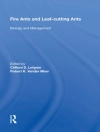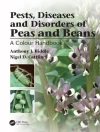The humid highlands in sub-Saharan Africa (SSA) are characterized by high population densities and require intensification. The Consortium for Improving Agriculture-based Livelihoods in Central Africa (CIALCA) has set up a research for development platform in various mandate areas in DR Congo, Burundi, and Rwanda, aiming to identify improved production, market, and nutrition options and facilitating the access for development partners to these options. This platform is supported by capacity building, multi-stakeholder dialogue, and monitoring and evaluation efforts. The conference, facilitated by CIALCA, aimed to (i) take stock of the state-of the art in agricultural intensification in the highlands of SSA and (ii) chart the way forward for agricultural research for development in the humid highlands of SSA, and more specifically in the recently launched Humidtropics Consortium Research Programme, through keynote, oral and poster presentations, and strategic panel discussions.
قائمة المحتويات
Theme 1 – System characterization.- Bridging the soil map of Rwanda with the ‘farmer’s mental soil map’ for an effective Integrated and Participatory Watershed Management research model.- Intensification of crop–livestock farming systems in East Africa: A comparison of selected sites in the highlands of Ethiopia and Kenya.- Rapid assessment of potato productivity in Kigezi and Elgon Highlands in Uganda.- Farmers’ knowledge and perception of climbing beans-based cropping systems in Rwanda.- Securing crop phosphorus availability in the humid tropics: Alternative sources and improved management options – A review.- Theme 2 – System components.- A decade of agricultural research in Rwanda: Achievements and the way forward.- Do commercial biological and chemical products increase crop yields and economic returns under smallholder farmer conditions?.- Enhanced utilization of biotechnology research and development innovations in eastern and central Africa for agro-ecological intensification.- Investing in Land and Water Management Practices in the Ethiopian Highlands: Short- or Long-Term Benefits?.- Yield responses of cowpea (Vigna unguiculata) varieties to phosphorus fertilizer application across a soil fertility gradient in western Kenyan highlands.- Innovations to overcome staking challenges to climbing beans production by smallholders in Rwanda.- Crop–livestock interaction for improved productivity: Effect of selected varieties of field pea (Pisum sativum L.) on grain and straw parameters.- From standards to practices: The intensive and improved rice (SRI and SRA) systems in the Madagascar Highlands.- Identification of elite, high yielding and stable maize cultivars for Rwandan mid-altitude environments.- Determination of appropriate rate and mode of lime application on acid soils of western Kenya: targeting small scale farmers.- Assessment of fertilizer efficiency in Walungu weathered soil on maize yield.- Improvement of sweetpotato (Ipomoeabatatas (L.) Lam) production with fertilizer and organic inputs in Rwanda.- Evaluation of sweetpotato varieties for the potential of dual-purpose in different agroecological zones of Kenya.- Theme 3 – Drivers and determinants for adoption.- Livelihoods heterogeneity and water management in Malawi: policy implications for irrigation development.- Access to subsidized certified improved rice seed and poverty reduction: evidence from rice farming households in Nigeria.- Factors influencing the adoption of improved rice varieties in Rwanda: An application of the Conditional Logit Model (CLM).- Assessing the influence of farmers’ field schools and market links on investments in soil fertility management under potato production in Uganda.- Bean utilization and commercialization in Great Lakes region of Central Africa: The case of smallholder farmers in Burundi.- Enhancing farmers’ access to quality planting materials through community-based seed and seedling systems: Experiences from the Western Highlands of Cameroon.- Returns to production of common bean, soybean, and groundnut in Rwanda.- Theme 4- Knowledge-intensive approaches.- Beyond the pilot sites: Can knowledge-intensive technologies diffuse spontaneously?.- Agricultural innovations that increase productivity and generates incomes: Lessons on identification and testing processes in Rwandan agricultural Innovation Platforms.- ISFM adaptation trials: farmer-to farmer facilitation, farmer-led data collection, technology learning and uptake.
عن المؤلف
Bernard Vanlauwe joined IITA in Kenya in March 2012 to lead the Central Africa hub and the Natural Resource Management research area. In this capacity, he is also having an oversight role in the Consortium Research Programs (CRP) on Humidtropics; the Water, Land, and Ecosystems; and CCAFS. Prior to this appointment, he was the leader of the Integrated Soil Fertility Management (ISFM) program of the Tropical Soil Biology and Fertility research area of CIAT (TSBF). He joined CIAT-TSBF in 2001 and led the development, adaptation, and dissemination of best ISFM options in various agro ecological zones in sub-Saharan Africa. In September 2010, he obtained a Visiting Professor position at the Swedish Agricultural University in Uppsala in the Soils and Environment Department. He had also worked at IITA in Nigeria (1991 – 2000) and the Catholic University of Leuven, Belgium (1989-1991), focusing on unraveling the mechanisms underlying nutrient and soil organic matter dynamics in tropical agroecosystems. In that context, he obtained his Ph D in 1996 in Applied Biological Sciences. He has published over 100 papers in scientific journals and over 120 in other forms and has (co-) supervised over 30 MSc and 10 Ph D students.












